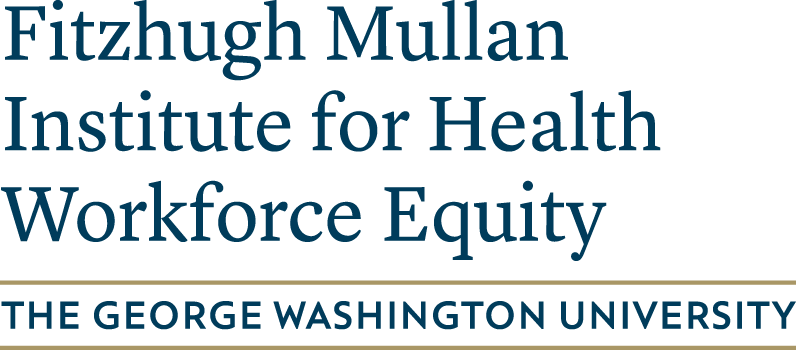Letter to House Ways and Means Committee
Invited commentary on racial equity in clinical algorithms, care, and research.

Social Mission Alliance (then The Beyond Flexner Alliance) submitted invited commentary and recommendations to the Chair of the House Ways and Means Committee regarding the special responsibility of health professional schools, academic health centers, and training hospitals in producing future health care providers. Training institutions must be held responsible for dismantling racism in health care delivery, research, and training, and incorporating social mission in training and practice.
Read the letter below, or access the PDF version here.
October 16, 2020
The Honorable Richard Neal
Chairman, Ways and Means Committee
United States House of Representatives
1102 Longworth House Office Building
Washington, D.C. 20515
Dear Chairman Neal and the House Ways and Means Committee,
The Beyond Flexner Alliance appreciates the opportunity to comment on the Chairman’s Request for Information regarding the important and timely topic of racial equity in clinical algorithms, care, and research. The Beyond Flexner Alliance (BFA) is a national movement, focused on health equity and training health professionals as agents of more equitable health care. BFA aims to promote social mission, which is defined as the contribution of the school in
its mission, programs, and the performance of its graduates, faculty and leadership in advancing health equity and addressing the health disparities of the society in which it exists.
The 13th amendment may have abolished slavery, but it did not abolish oppression, discrimination, and misuse of race and ethnicity, often exemplified in today’s health care system. The most notable examples include race adjusted algorithms in cardiology, nephrology, obstetrics, and urology which in turn impact the care and course of treatment a Black patient receives compared to a white patient (1). This is problematic because race is a social construct, rooted in white supremacy and the concept of othering (2). There is no genetic or biological difference among races and therefore, race should not be used as a risk factor in determining treatment or diagnosis. Training in race-based medicine must be eliminated and interdisciplinary health professionals must be trained in race-conscious health care and social mission.
Health professional schools, academic health centers, and training hospitals hold a special responsibility in training and producing future health care providers. The very intent of training is to establish the knowledge and skills needed to provide high quality health care, and a growing body of evidence shows training programs imprint practice behaviors that can be detected nearly 20 years later (3). Therefore, the misuse of race and ethnicity in these training institutions not only impacts the clinical service and research at these organizations today, it will impact health care and disparities for decades to come.
Training institutions must be held responsible for dismantling racism in health care delivery, research, and training, and incorporating social mission in training and practice. Professional organizations and accrediting bodies can use their standing and institutional power to drive policy change. Federal and state policies can be leveraged to advance local, regional, and national change. Organizations must acknowledge their complicity in the misuse of race and ethnicity and strive for higher standards to eliminate the misuse of race and ethnicity in algorithms, research, and care. We suggest 2 strategies for this:
- Race-Conscious Health Care
- Race has often been used as a risk factor, a basis for determining clinical care, and a biomarker for disparities. Given no biological difference among races, the obvious risk factor is racism, not race. Using race to determine clinical care and research outcomes lead to adverse treatment, outcomes, and health inequities for no reason other than differences in skin tone. The disparities in outcomes are a product of structural barriers inhibiting individuals from having the opportunity to lead a healthy life. Race-adjusted tools and race-based health care must be abandoned and instead, structural inequities leading to disparities must be examined and race-conscious health care should be practiced. Race-conscious health care seeks to promote anti-racist practices in research, health professions education, and clinical practice (4) This pedagogy defines race as a social and power construct where the effects of structural racism are analyzed and taught (4). Ultimately, race-conscious health care seeks to reduce racial health inequities by providing support to overcome structural health barriers.
- Train Health Professionals with a Social Mission Lens and Hold Academic Health Centers and Teaching Hospitals Accountable
- The training health professionals receive influences how they practice. Training health professionals in race-based medicine is problematic and harm causing. We must move beyond that and recognize that it is imperative health professionals are trained in health equity and social mission. Social mission is the contribution of the school in its mission, programs, and the performance of its graduates, faculty, and leadership to enhancing health equity and to addressing the health disparities of the society in which it exists (5).
- As the social determinants of health become more broadly recognized and clinical algorithms become antiquated, institutions must commit to teaching and modeling social mission, across disciplines, to institute new norms in practice dedicated to improving patient outcomes and provider experiences.
- Academic health centers and teaching hospitals are responsible for molding and shaping the next generation of leaders. Standards must be put in place to ensure institutions are operating through a social mission lens. Holding institutions accountable for practicing health equity and eliminating disparities through social mission-related activities will drive training centers to embrace less racist care and research.
A number of policy levers can be applied to advance these goals. In 2015, the federal government provided nearly $15 billion to support graduate medical education (GME), largely through Medicare, Medicaid, and the VA.6 Despite these major investments, major gaps continue to exist in the physician workforce, and national experts have called for major GME reforms. Accountability for clinical training environments is one area where federal GME funding could be leveraged to dismantle racism and address health disparities. The federal government makes additional health workforce investments through the Health Resources and Services Administration programs, including the National Health Service Corps, Health Professions Training for Diversity programs, Primary Care and Oral Health Training Programs, and Nursing Workforce Development Programs. These programs could provide grants to implement needed changes or require accountability for race-conscious health care to receive funding. Similarly, NIH funding – of which academic health centers are major recipients – could apply accountability for race-conscious research and environments to be eligible for funding. The Beyond Flexner Alliance envisions health professions education in which social mission is present, prominent, and valued to drive health equity and improved health for individuals,
communities, and nations. Standing for health equity means standing for anti-racist movements, including abolishing the misuse of race in algorithms, research and clinical care. Health professionals– current and future– must be trained in race-conscious medicine and social mission if we are to truly eradicate disparities and improve health outcomes. We thank the Chairman and the Committee for the opportunity to comment on this topic. If you have any comments or inquiries, please feel free to reach out to BFA Director, Toyese Oyeyemi at toyese@gwu.edu.
Sincerely,
The Beyond Flexner Alliance
Sources:
- Vyas, D. A., Eisenstein, L. G., & Jones, D. S. (2020). Hidden in Plain Sight – Reconsidering the Use of Race Correction in Clinical Algorithms. The New England journal of medicine, 383(9), 874–882. https://doi.org/10.1056/NEJMms2004740
- Johnson, J. L., Bottorff, J. L., Browne, A. J., Grewal, S., Hilton, B. A., & Clarke, H. (2004). Othering and being othered in the context of health care services. Health communication, 16(2), 255–271. https://doi.org/10.1207/S15327027HC1602_7
- Chen, C., Petterson, S., Phillips, R., Bazemore, A., & Mullan, F. (2014). Spending patterns in region of residency training and subsequent expenditures for care provided by practicing physicians for Medicare beneficiaries. JAMA, 312(22), 2385–2393. https://doi.org/10.1001/jama.2014.15973
- Cerdeña JP, Plaisime MV, Tsai J. From race-based to race-conscious medicine: how anti-racist uprisings call us to act. Lancet. 2020 Oct 10;396(10257):1125-1128. doi: 10.1016/S0140-6736(20)32076-6. PMID: 33038972; PMCID: PMC7544456.
- Mullan F. (2017). Social Mission in Health Professions Education: Beyond Flexner. JAMA, 318(2), 122–123.
https://doi.org/10.1001/jama.2017.7286 - HHS Needs Better Information to Comprehensively Evaluate Graduate Medical Education Funding (Rep.). (2018, March). Retrieved October 14, 2020, from Government Accountability Office website: https://www.gao.gov/assets/700/690580.pdf

